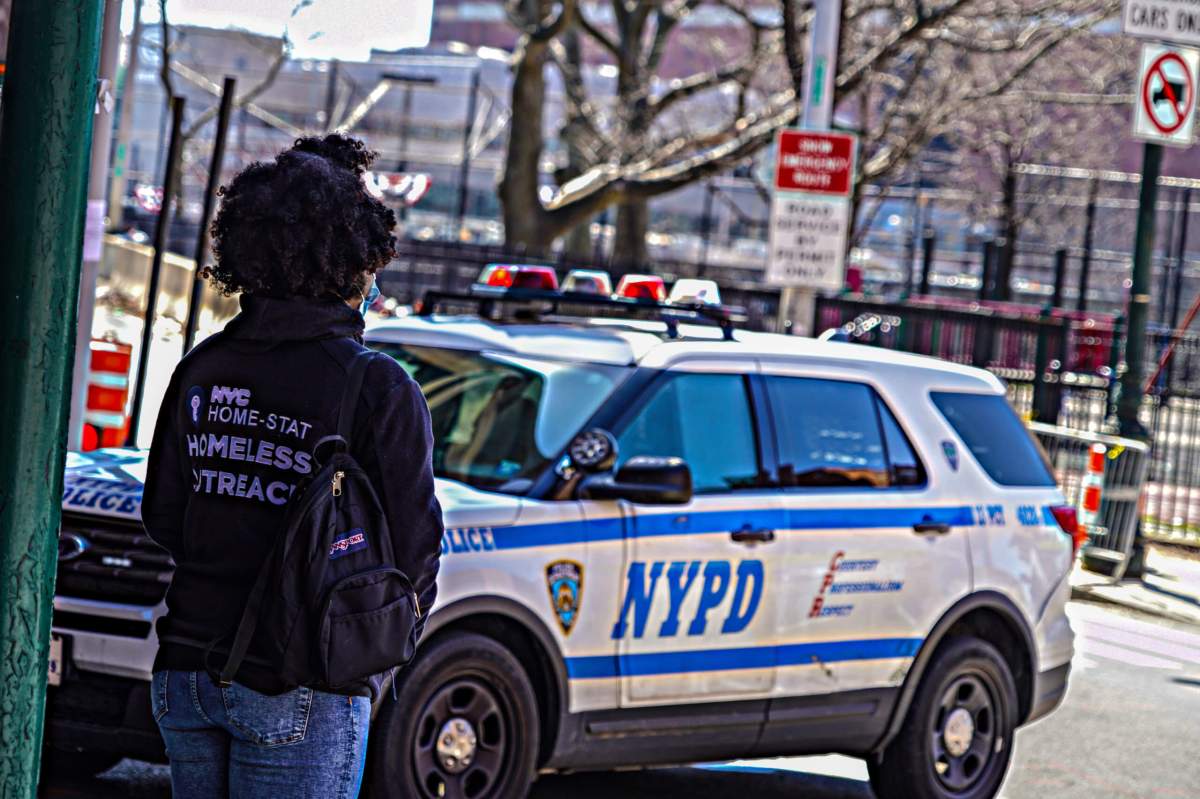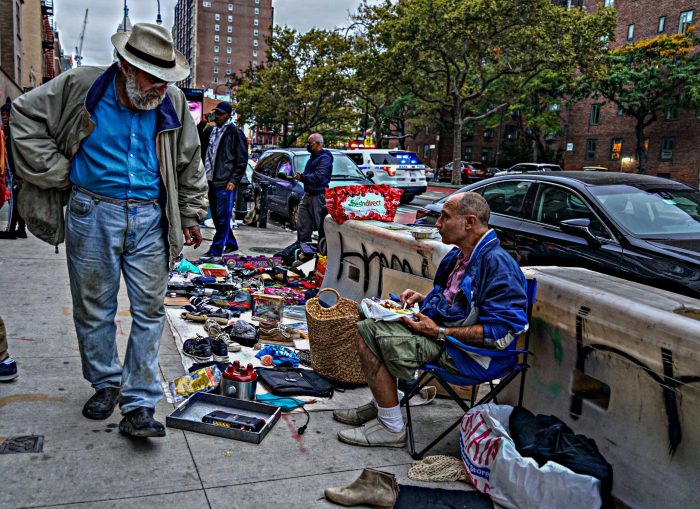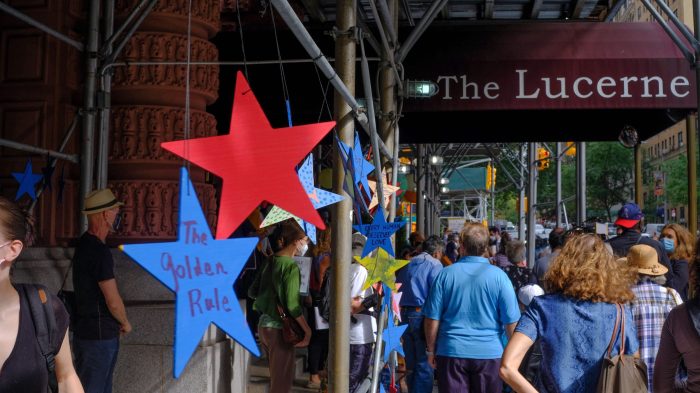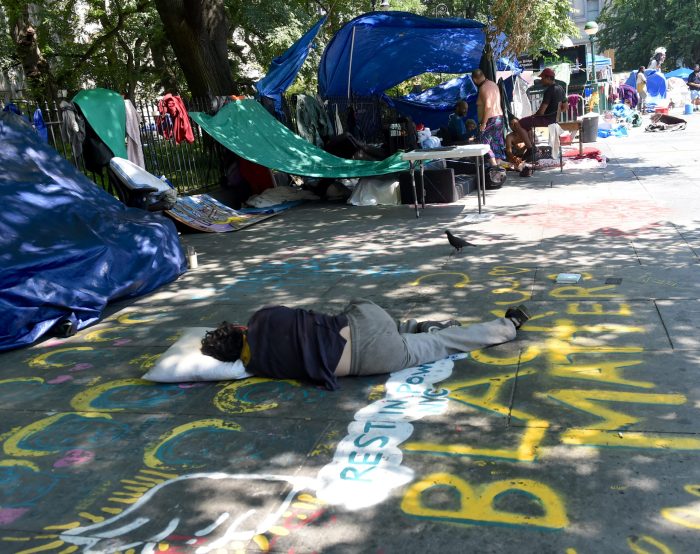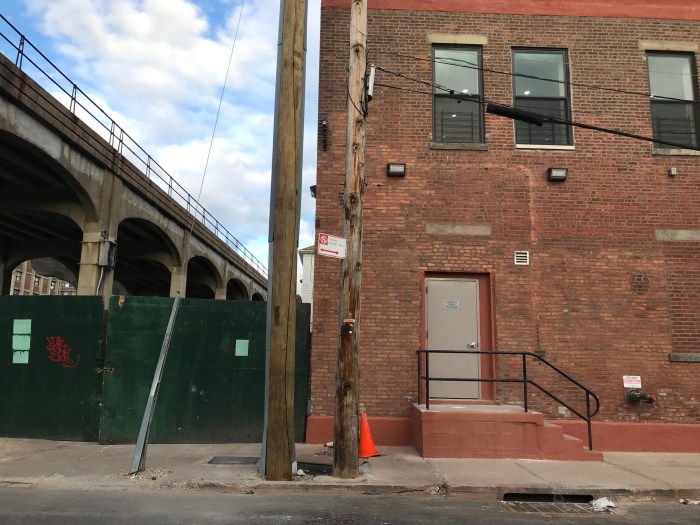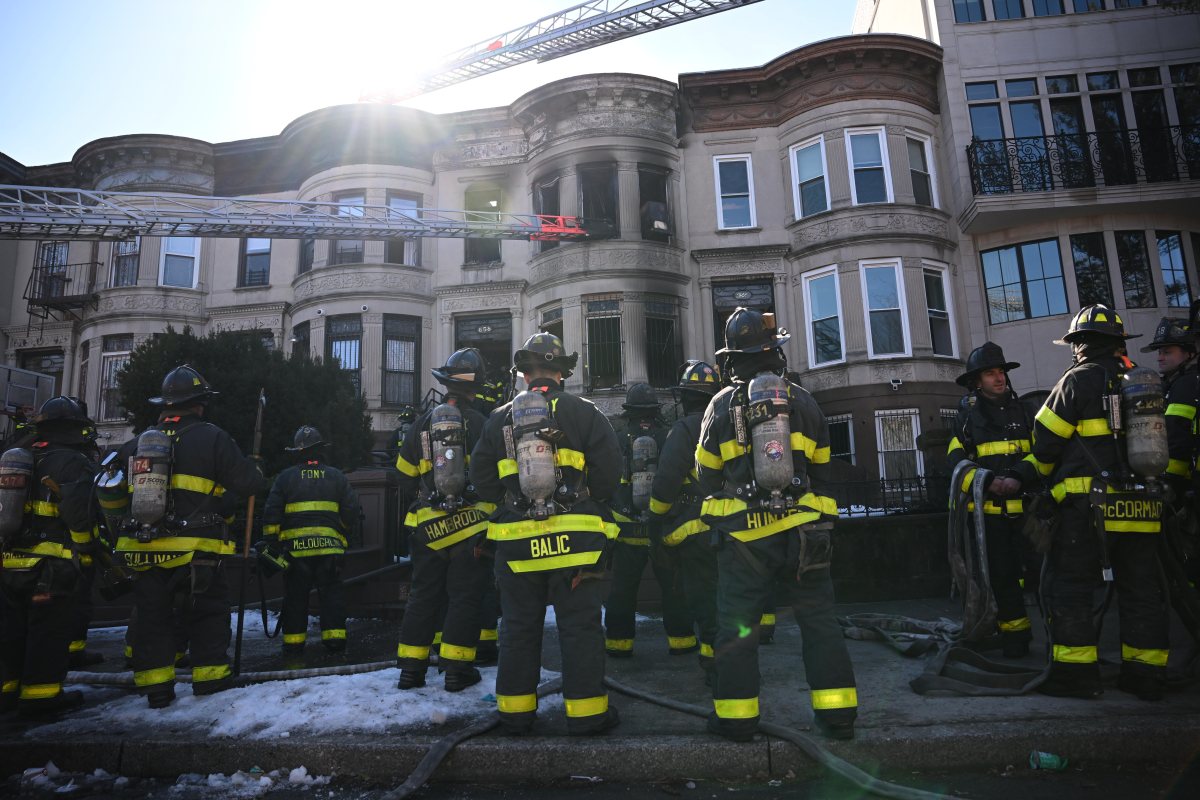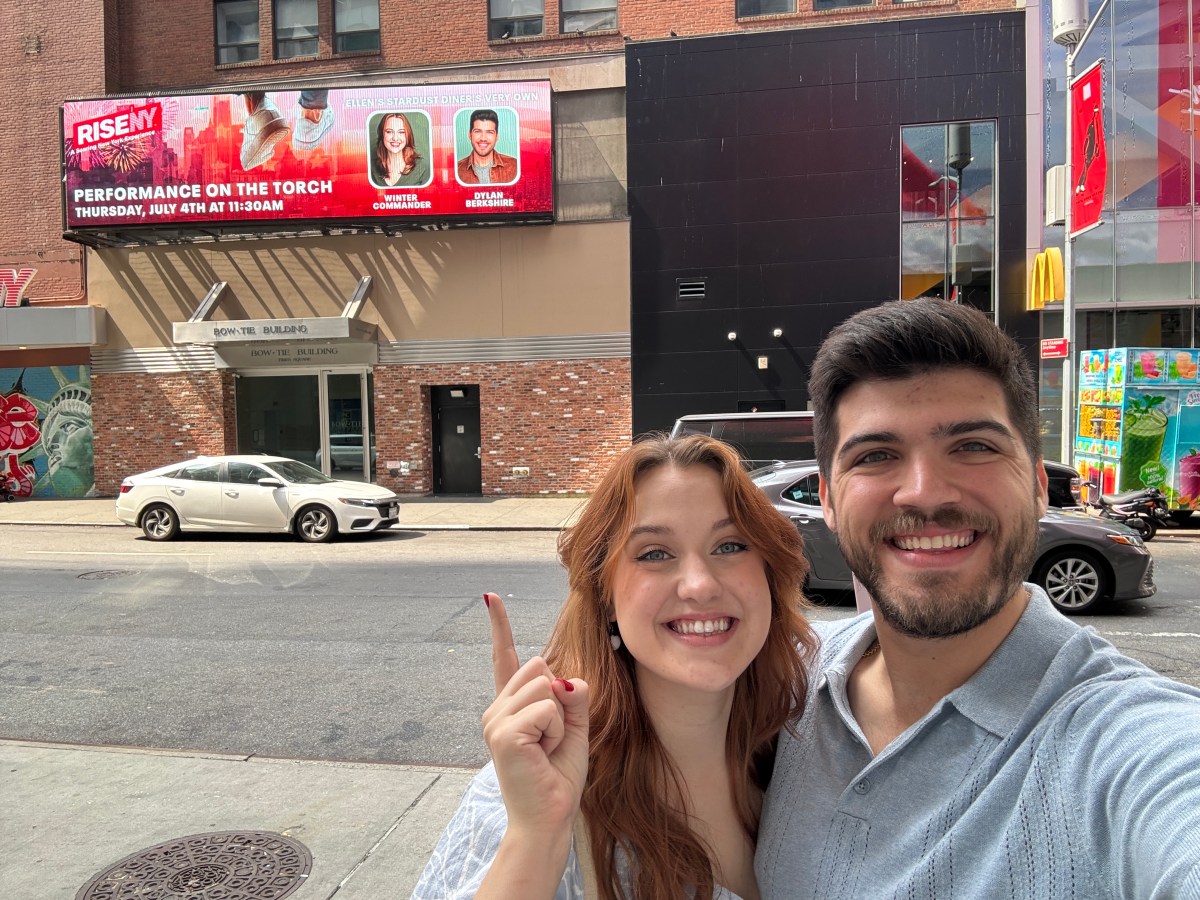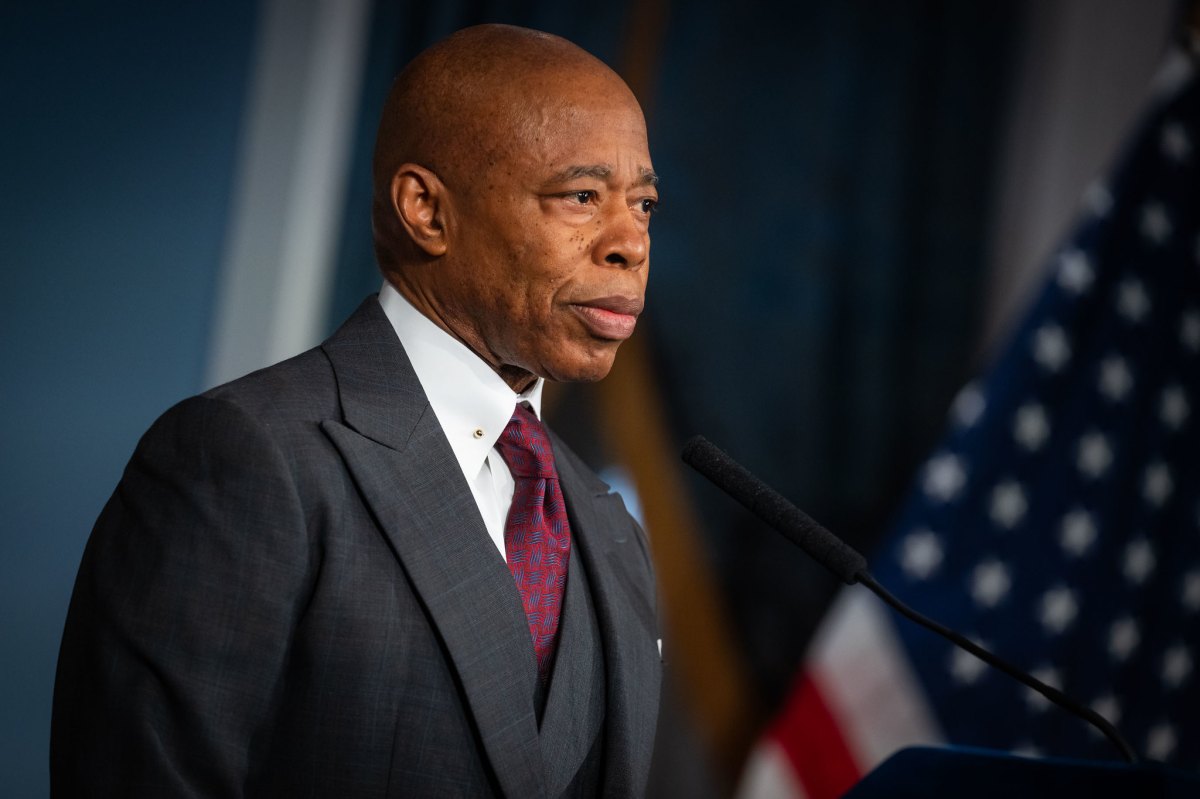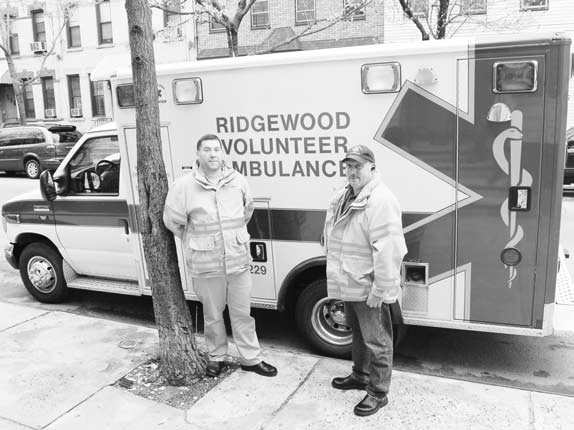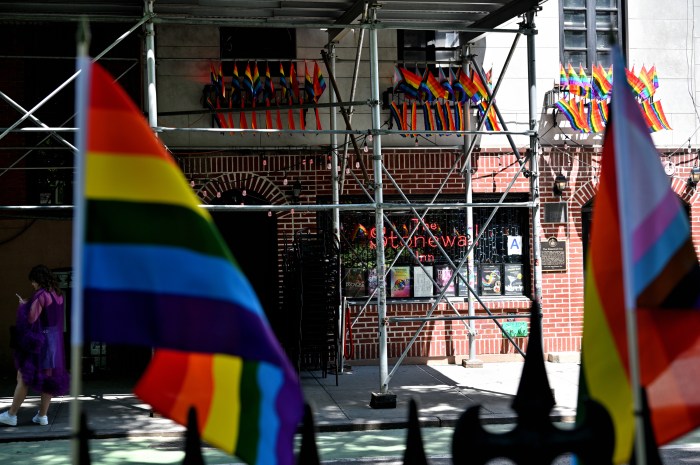They had been living under the FDR Drive for months, but on Monday, a homeless couple faced an attempted eviction from city workers.
Impending construction work appears to be the move for relocating Alex Lively and April Saccoccio, who constructed an encampment on 18th Street and Avenue C, just below the FDR Drive. Their dwelling is made up of clothing, lawn chairs, and objects such as umbrellas and a panel room divider donated to them by nearby residents.
Earlier this year, amNewYork Metro profiled the growing camp. Lively and Saccoccio say they have been saving funds to rent a storage unit in order to keep their beloved gifts safe.
But on April 5, the couple said they faced eviction. They’re staying put for now, though how long they will remain there is not clear.
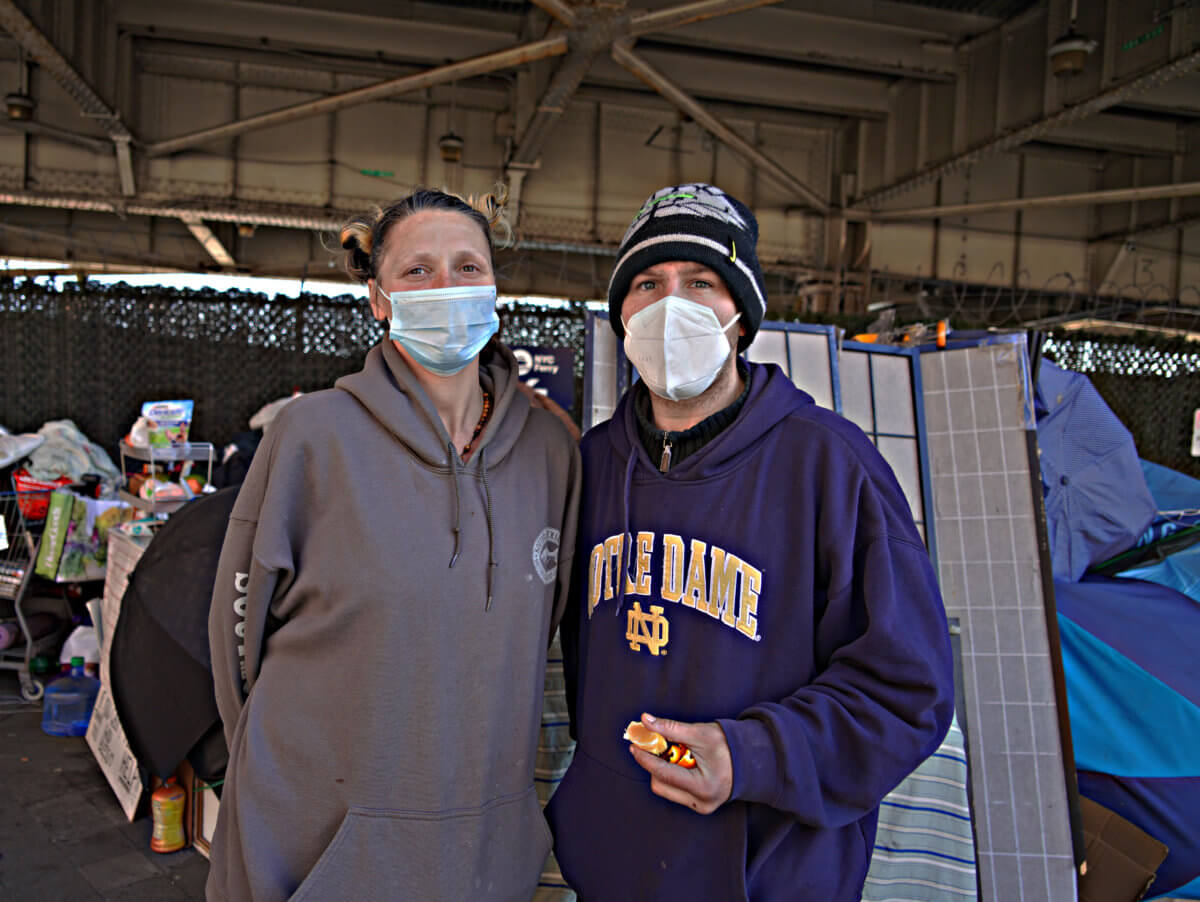
At 10:30 a.m., amNewYork Metro received a report stating that NYPD officers and homeless outreach was attempting to remove them from the area. Upon arriving, several police officers from the 13th Precinct and a representative from a homeless outreach program were asking the couple to leave the area.
However, once it became apparent the officials were being photographed, they retreated to curb and begin snapping pictures of their own. They refused to comment on the situation.
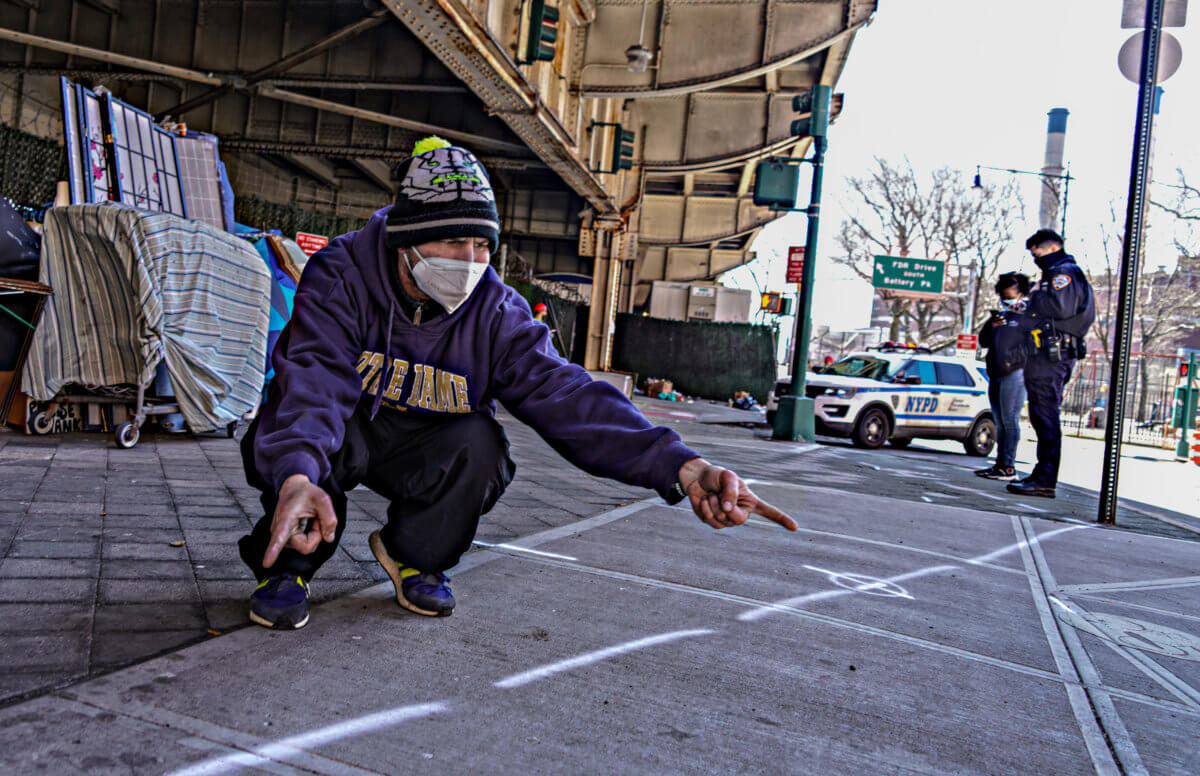
Visibly distressed, Lively pointed to white markings spray painted on the sidewalk around his makeshift home.
“I was sleeping, they woke me up and told me they are going to be doing a fence. I was like what do you mean they are ‘doing a fence?’ Then the construction people came and started painting white lines,” Lively said, exasperated.
The couple live just ahead of a parking lot beneath the FDR, which has been surrounded by a fence since they arrived. On Monday morning, construction workers were attempting to bring the fence forward and over the sidewalk, in turn pushing Lively, Saccoccio, and their two dogs from the area.
But the pair stood their ground and refused to be uprooted.
However, another homeless individual who had also taken up a base of his own a few feet away on another sidewalk was forced out. After this man had been removed the workers immediately began drilling polls into the sidewalk and extending the fence forward.
With nowhere else to go, this individual wedged himself in between an on ramp to the FDR Drive adjacent to Murphy Brothers Playground.
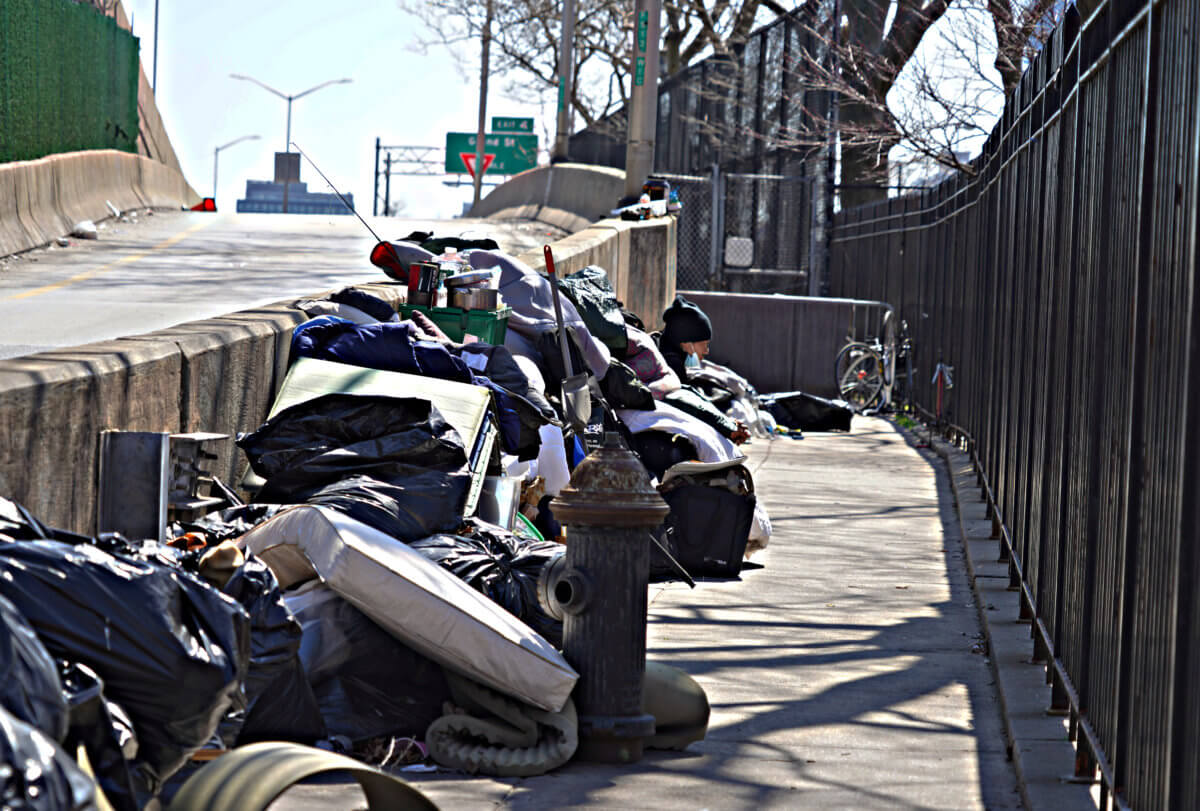
“He came after we moved in, but he talks to himself. We don’t really speak to him,” Lively said.
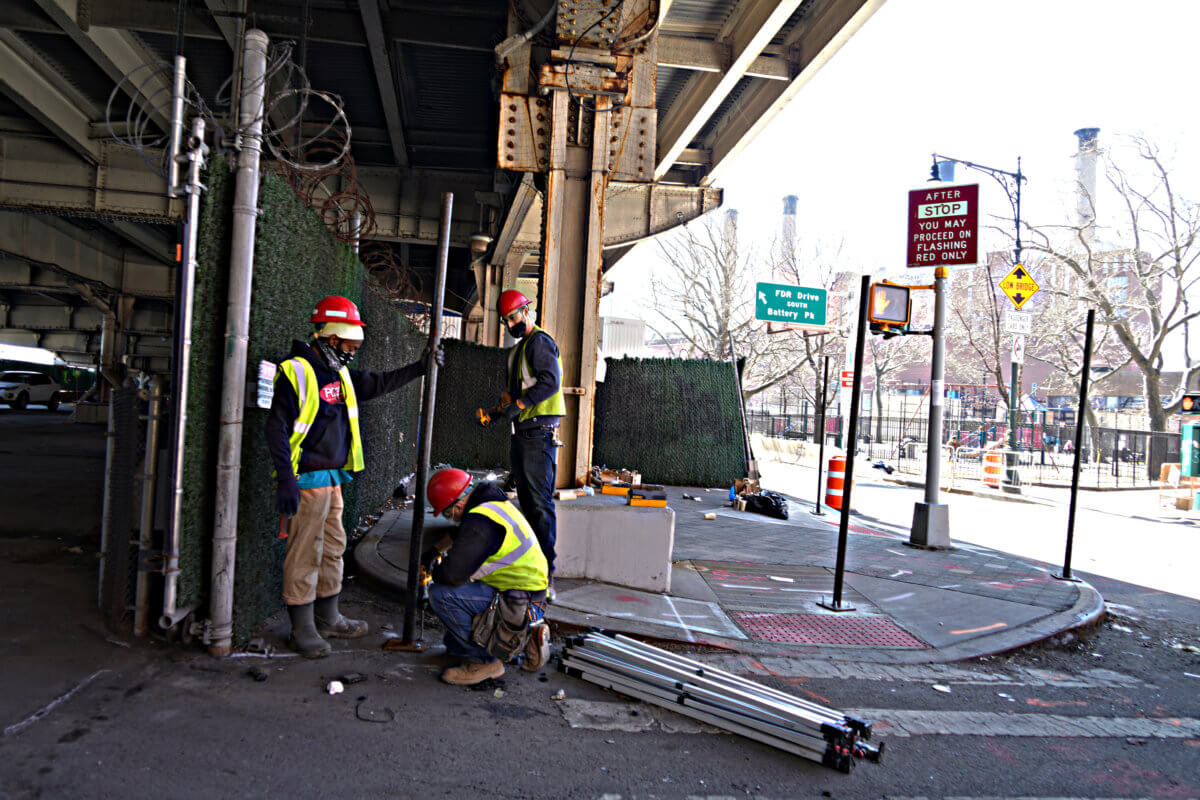
Lively watched with dismay as the construction moved swiftly and the fence was shifted forward over the nearby sidewalk, which now forces pedestrian traffic into the roadway.
Saccoccio shook with anxiety while feeding her dogs, periodically peering over at the encroaching workforce. The couple claims they were given no notice and very little explanation; merely told they would have to vacate the vicinity.
After about an hour and what appeared to be a long conversation, both the NYC Home-STAT Homeless Outreach representative and NYPD left without comment or explanation.
The couple breathed a sigh of relief and hugged one another.
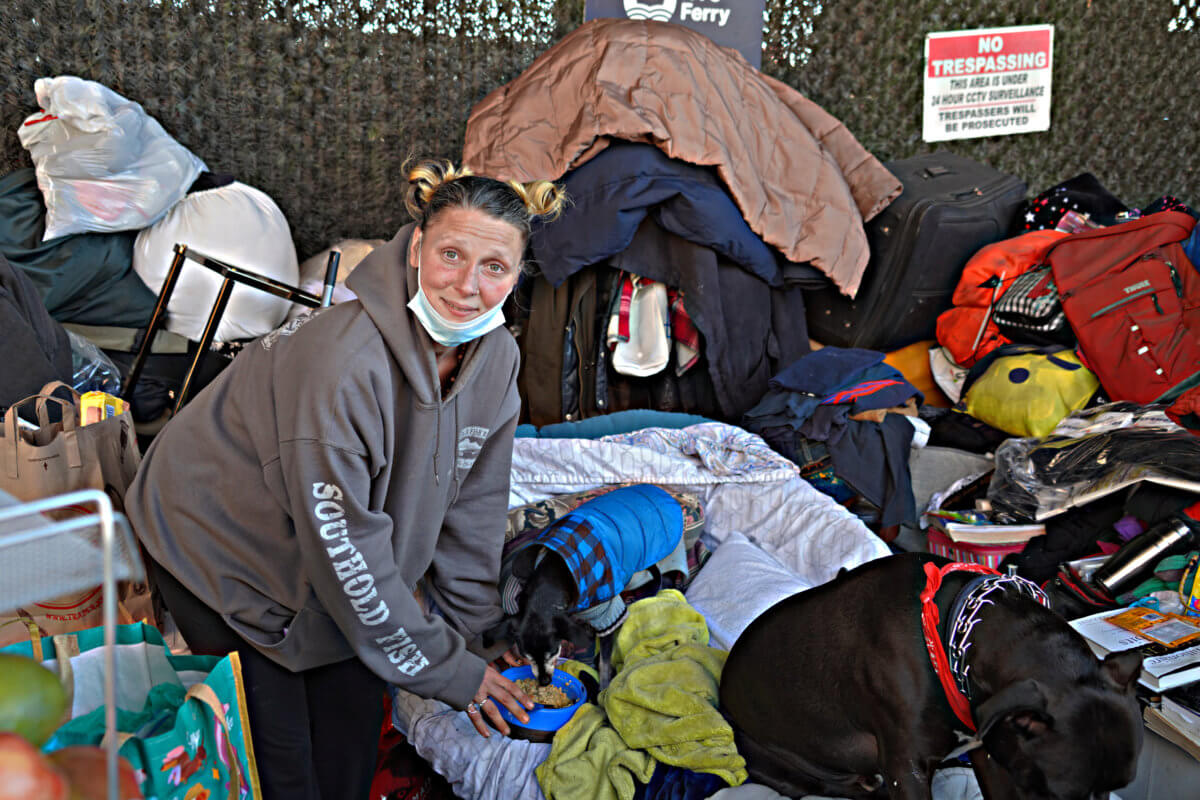
Lively adamantly expressed that he and Saccoccio did not seek to bring unwanted attention to their shelter. Likely also stated that he has been sober for over 10 years and plans on keeping it that way.
Saccoccio also shared that she is awaiting paperwork confirming that their pets are emotional support animals, which will allow her to take her dogs with her wherever she goes.
With the ESA forms and Saccocio’s stimulus check arriving, they hope to move everything they have into a storage unit and finally reside within a hotel. Until then, their encampment remains their sanctuary.
The Department of Transportation shared that this area is an active bridge construction, which was why workers were adjusting the fence. Additionally, a spokesperson from DSS-DHS told amNewYork Metro, “As part of these efforts, we remain committed to doing everything we can to accommodate the unique needs of unsheltered New Yorkers on a case-by-case basis while working closely with each client to connect them to our dedicated services and supports. For example, for any unsheltered individuals who utilize Emotional Support Animals, our outreach staff are equipped to and do assist them in establishing their need for such an animal — and engaging individuals directly in this manner helps to build more trust while making sure we’re working to meet their unique needs as part of their acceptance of shelter services.”



